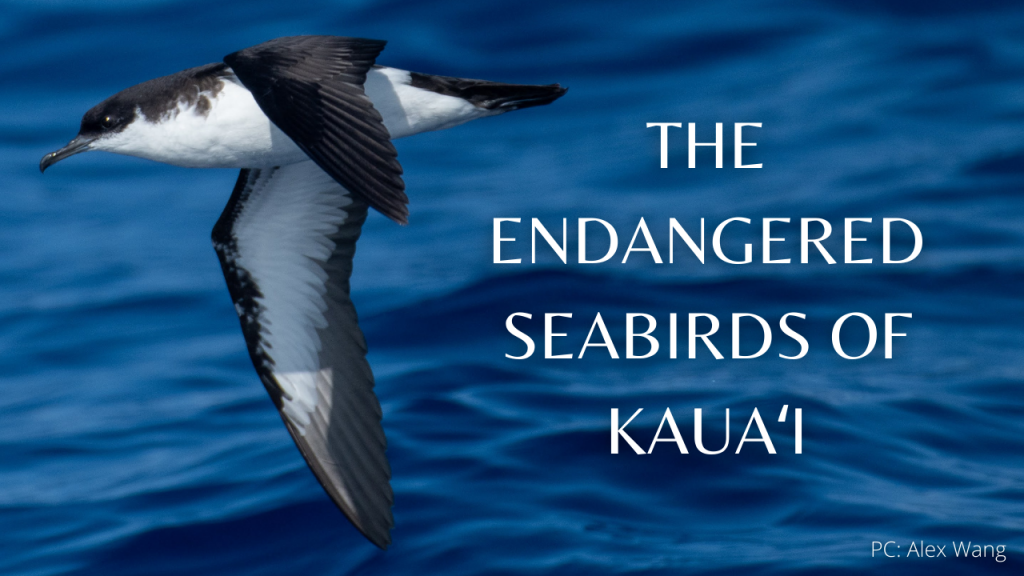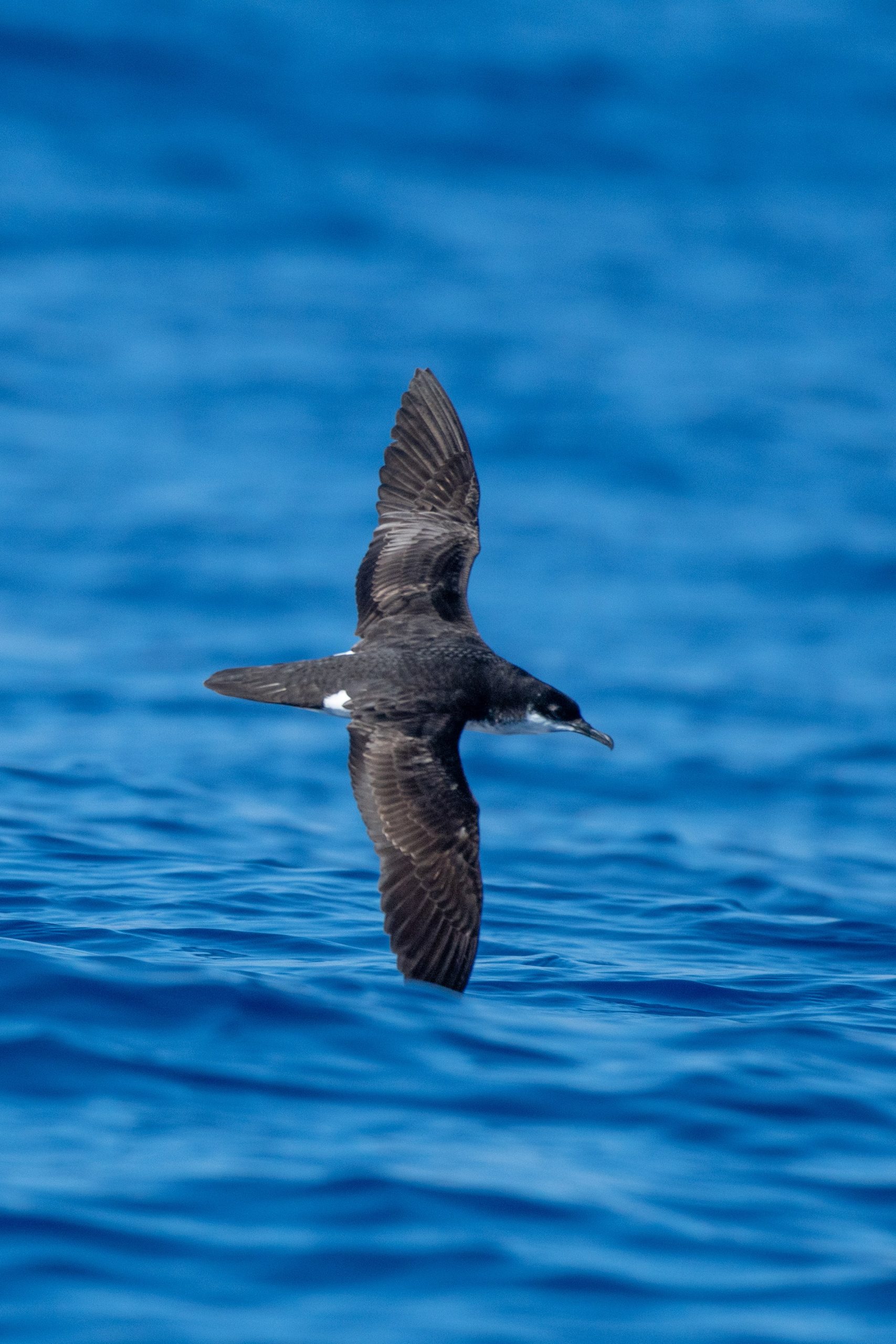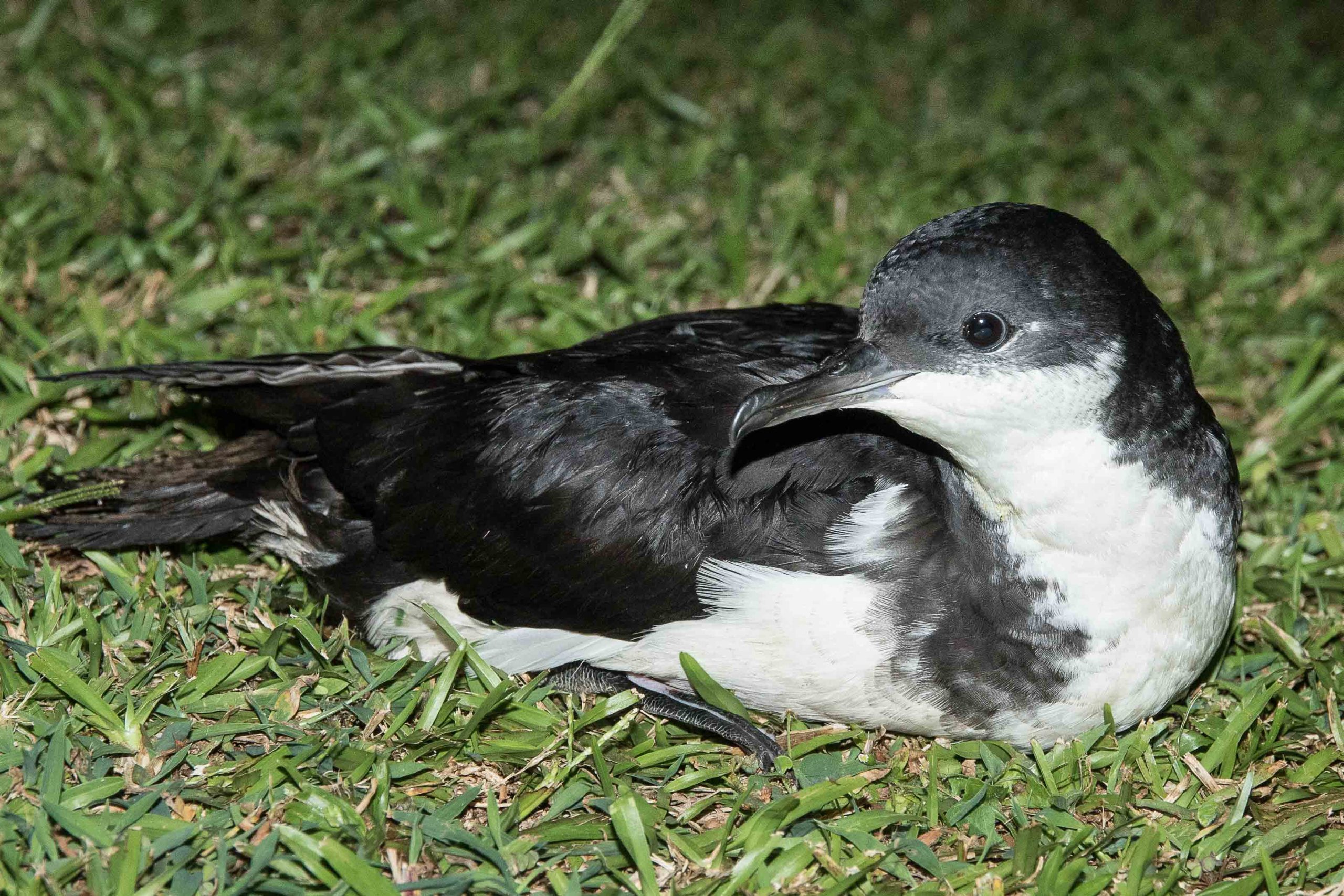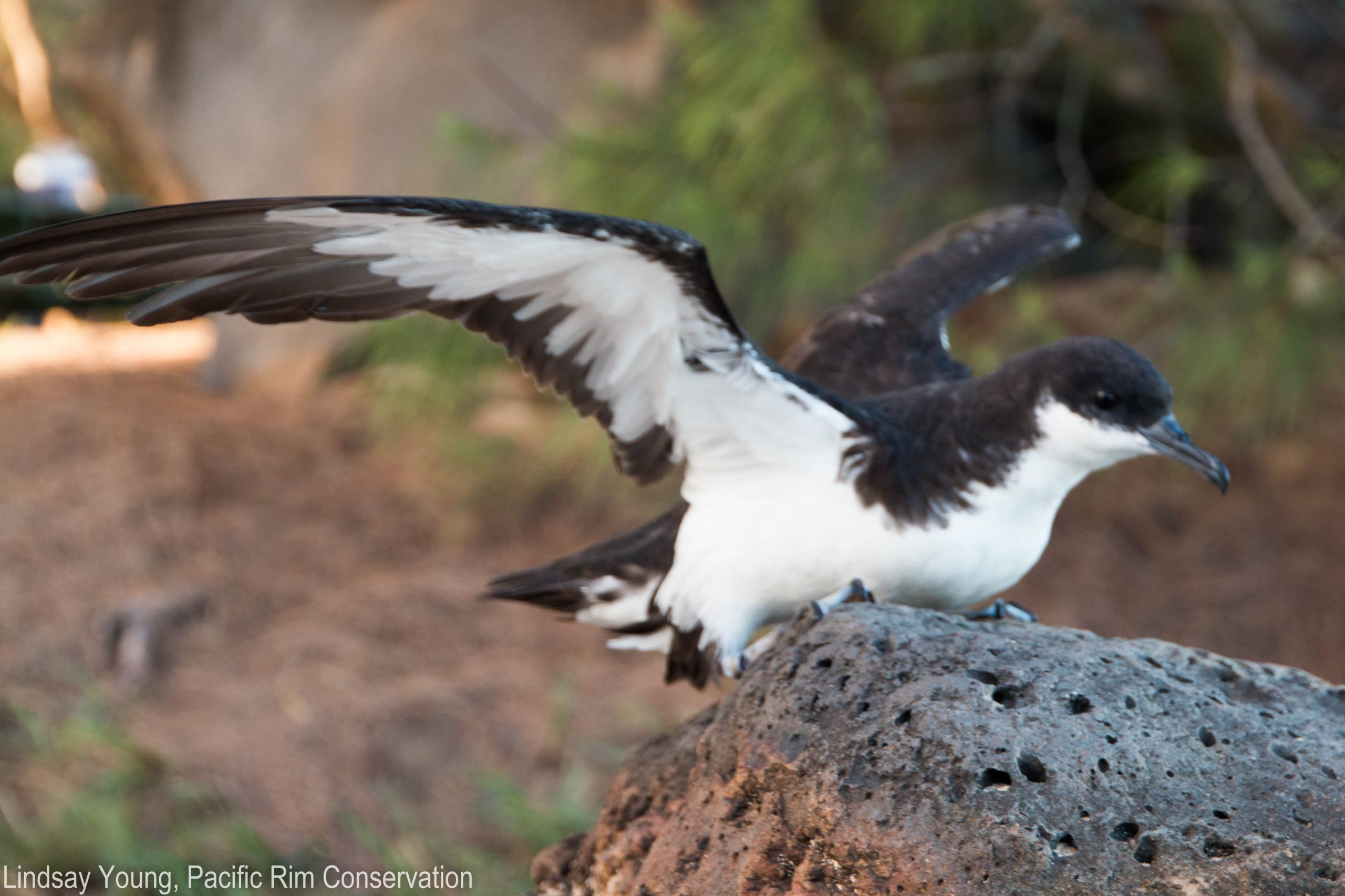ʻAʻo

Names
- ʻŌlelo Hawaiʻi: ‘A‘o
- Common: Newell’s shearwater
- Scientific: Puffinus auricularis newelli
Song
Conservation Status
- Federally Listed as Threatened
- State Listed as Threatened
- IUCN Red List Ranking – Endangered
Species Information
The ‘a‘o or Newell’s shearwater (Family: Procellaridae) is highly pelagic year-round, and is endemic to the Hawaiian Islands. Adult males and females are dark, sooty brown above, with white throat and underparts, and have a dark bill with a hooked tip. Flight is direct, fast and usually low over water, powered by rapid wing beats intercalated with glides; wing loading is higher than in more aerial shearwaters due to the species’ foraging method. Often forages in large, mixed hunting groups made of several species associated with schools of large, predatory fishes, which drive prey to the surface. ‘A‘o feed mainly by pursuit-plunging; individuals dive into water and swim using their partly folded wings for propulsion. Diet is not well known, but likely consists of fish and squid. ‘A‘o are colonial and nest on steep mountain slopes, with variable amounts of vegetation, where they lay a single egg in cavities and burrows, often located at the base of a tree. Breeding is highly synchronized, and eggs are laid in early June, and most young start to fly by November. Both parents incubate the egg, and brood and feed the nestling. Parents forage hundreds of kilometers offshore and return to colony at night to feed chick. No post-fledging care is provided. Age at first breeding is six to seven years.
Distribution
‘A‘o nest on Kaua‘i, Hawai‘i, Moloka‘i, and Lehua, and may also nest on O‘ahu, Maui, and Lāna‘i, but not confirmed. Nesting colonies do not occur outside of Hawai‘i. At-sea distribution includes the eastern and central subtropical Pacific Ocean.
Habitat
On Kaua‘i, most colonies occur between 160 and 1,200 meters (525 – 3,936 feet) elevation on steep, densely vegetated mountains, however, birds also nest on the dry, sparsely vegetated cliffs of the Nā Pali coast and on Lehua. On the island of Hawai‘i, they nest within forested cinder cones. Colonies are usually located in areas of open native forest dominated by ‘ōhi‘a (Metrosideros polymorpha) with a dense understory of ‘uluhe fern (Dicranopteris linearis).
Threats
- Historical hunting. Subsistence hunting by Polynesians likely reduced populations, and the species was likely captured using methods described for ‘ua‘u or Hawaiian petrel (e.g., artificial nests, nets, and smoke from fires).
- Introduced predators. Adults, eggs, and chicks are taken by introduced predators, including dogs (Canis familiaris), pigs (Sus scrofa), and rats (Rattus exulans). Europeans added barn owls (Tyto alba), additional rat species, feral cats (Felis silvestris), and the small Indian mongoose (Herpestes auropunctatus), which is the main factor behind population decline. The largest colonies are on Kaua‘i, the only Main Hawaiian Island besides Lāna‘i where the small Indian mongoose is not established.
- Habitat loss and degradation. Kaua‘i has lost about 75 percent of its forest in the last 150 years, and much of the remaining forest is being degraded by non-native plant species and feral ungulates
- Artificial lighting. Street and resort lights, especially in coastal areas, disorient fledglings, causing them to eventually fall to the ground exhausted or increasing their chance of colliding with artificial structures (i.e., fallout) such as powerlines. Once on the ground, thousands are killed annually by cars, cats, and dogs or die of starvation or dehydration. On Kaua‘i, approximately 350 fledglings were recovered annually from fallout in 1999 to 2010, far fewer than the thousands found per year in the late 1970s when the Save Our Shearwaters (SOS) program began; an unknown number are never found.
- Collisions. Adults and fledglings are susceptible to mortality from collisions with obstacles such as communication towers, overhead utility lines, and wind farm structures while commuting between inland nest sites and the ocean at night.
- Overfishing. Because ‘a‘o rely on predatory fish to drive prey to the surface, overfishing may be affecting the population.
- Colony locations. Remoteness of colonies, as well as the habitat they occur in (e.g., steep terrain or dense forest) complicates predator and ungulate eradication or control.
- Catastrophes. Given that a large proportion of the population breeds on Kaua‘i, catastrophic events like hurricanes could lead to extirpation.
Learn more
Plans & Projects
- Kauaʻi Endangered Seabird Recovery Project (KESRP)
- Maui Nui Seabird Recovery Project (MNSRP)
- Lehua Ecosystem Restoration Project
Photos
Additional Resources
For more information and references visit the DLNR State Wildlife Action Plan factsheets. DOFAWʻs species pages and State Wildlife Action Plan fact sheets are provided for general information and are not meant to be a citable, original source of data. If you are a student, researcher, or writer looking for a citable source, please explore the references below or find other original data sources, rather than citing these webpages. The references below were provided by the authors of the State Wildlife Action Plan fact sheets at the time of drafting:
- Ainley DG, Telfer TC, Reynolds MH. 1997. Newell’s shearwater (Puffinus auricularis). In The Birds of North America, No. 297 (Poole A, Gill F, editors). Philadelphia, (PA): The Academy of Natural Sciences; and Washington DC: The American Ornithologists’ Union.
- IUCN Red List of Threatened Species. Version 2014.3. www.iucnredlist.org. (Accessed May 2015).
- NatureServe. 2003. Downloadable animal data sets. NatureServe Central Databases. Available at: https://www.natureserve.org/getData/vertinvertdata.jsp (March 10, 2005).
- Holmes N, Friefeld H, Duvall F, Penniman J, Laut M, Creps N. 2011. Newell’s Shearwater and Hawaiian Petrel Recovery: A Five-Year Action Plan. Department of Land and Natural Resources, Division of
- Forestry and Wildlife, Honolulu, HI; Pacific Cooperative Studies Unit, Honolulu, HI; and U.S. Fish and Wildlife Service, Honolulu, Hawai‘i.






